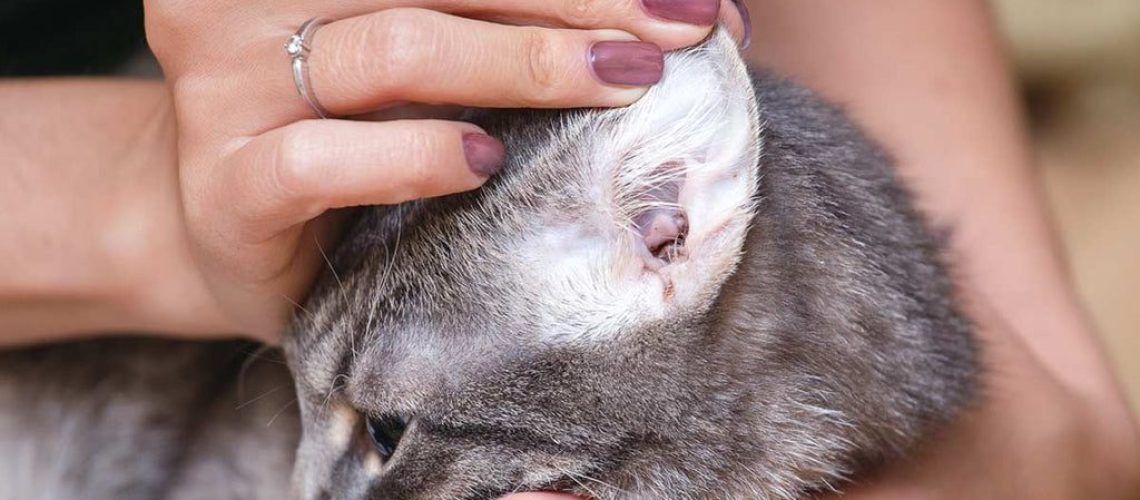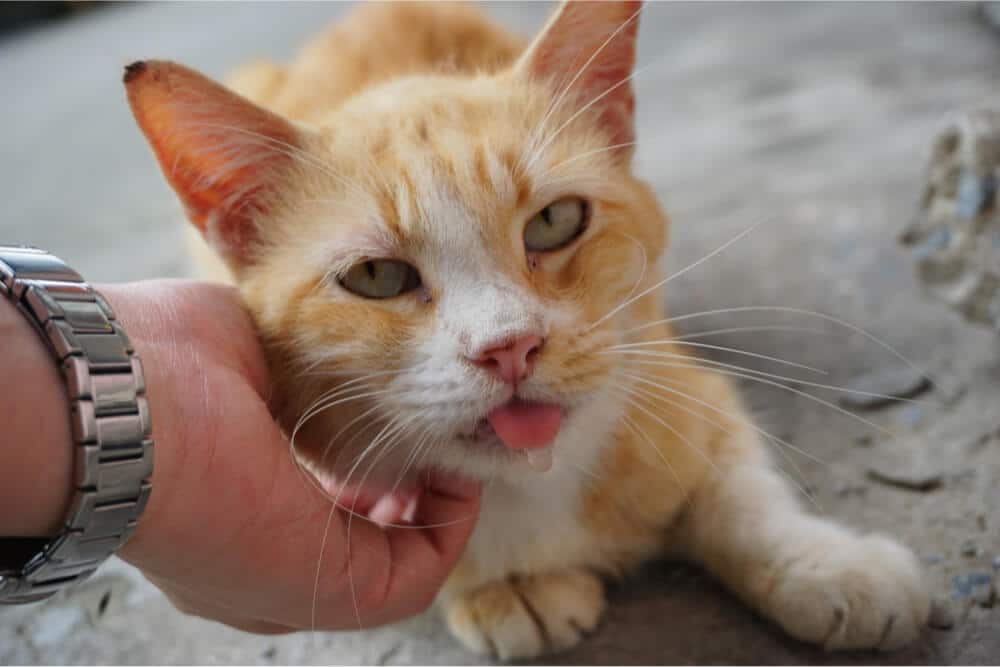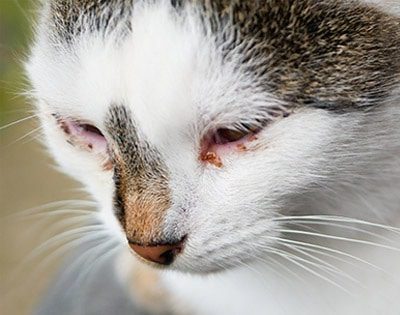Are you a cat owner who wants to ensure the health and happiness of your furry friend? If so, then understanding the ins and outs of ear infections in cats is essential. These pesky ear bugs can cause discomfort and even lead to more serious health issues if left untreated. But fear not! By delving into this subject, you'll gain valuable knowledge on how to tackle ear infections in cats, ensuring your feline companion stays purrfectly healthy. So let's dive right in and uncover the secrets to keeping those ears infection-free!
Key Takeaways:
- Ear infections in cats can be caused by a variety of factors, including allergies, parasites, and foreign objects.
- Common symptoms of ear infections in cats include head shaking, scratching at the ears, and discharge or odor from the ears.
- Regular cleaning of your cat's ears can help prevent ear infections by removing excess wax and debris.
- If you suspect your cat has an ear infection, it is important to consult with a veterinarian for proper diagnosis and treatment.
- Treating underlying causes such as allergies or parasites is crucial to preventing recurring ear infections in cats.
Understanding Ear Infections in Cats: What You Need to Know
What are ear infections?
Ear infections in cats occur when bacteria or yeast invade the ear canal, leading to inflammation and discomfort. The ear canal is a warm and moist environment, making it an ideal breeding ground for these microorganisms. If left untreated, ear infections can cause pain, hearing loss, and even more serious complications.
How do cats get ear infections?
Cats can develop ear infections for various reasons. One common cause is allergies, such as reactions to certain foods or environmental factors like pollen or dust mites. Other potential causes include parasites like ear mites or excessive moisture in the ears from bathing or swimming. Additionally, anatomical factors like narrow ear canals can make some cats more prone to developing infections.
Signs of an Ear Infection in Your Cat: How to Spot the Problem
What are the signs of an ear infection in cats?
Identifying the signs of an ear infection in your cat is crucial for prompt treatment. Some common symptoms include:
- Frequent scratching or rubbing of the ears
- Head shaking or tilting
- Inflammation and redness of the outer ear
- A foul odor coming from the ears
- Discharge or crusty debris inside the ears
- Hearing loss or disorientation
How can you spot an ear infection in your cat?
If you notice any of these signs, it's important to examine your cat's ears gently. Look for redness, swelling, discharge, or any unusual odor. Be cautious while examining, as cats may be sensitive and resistant to having their ears touched when they are in pain or discomfort. If you suspect an ear infection, it's best to consult a veterinarian for a proper diagnosis and treatment plan.
Possible Causes of Ear Infections in Cats: What's Behind the Issue
What causes ear infections in cats?
Ear infections in cats can have various causes, including:
- Allergies: Cats may develop allergic reactions to certain foods, environmental factors like pollen or dust mites, or even certain grooming products.
- Parasites: Ear mites are a common parasite that can cause ear infections. These tiny insects live inside the ear canal and feed on the wax and oils present.
- Anatomy: Some cats are more prone to ear infections due to their breed or individual anatomy. For example, cats with long ears or narrow ear canals have a higher risk of developing infections.
- Moisture: Excessive moisture from bathing or swimming can create a favorable environment for bacteria and yeast to thrive in the ears.
How do these factors contribute to ear infections?
Allergies can lead to inflammation and increased production of wax in the ears, making them more susceptible to infection. Parasites like ear mites directly cause irritation and inflammation in the ear canal. Anatomical factors can make it difficult for proper ventilation and drainage of the ears, creating an ideal environment for microorganism growth. Lastly, excessive moisture provides a breeding ground for bacteria and yeast, which can multiply rapidly and trigger an infection.
Which Cats Are More Prone to Ear Infections? Exploring the Risk Factors
Are certain cat breeds more prone to ear infections?
While all cats can develop ear infections, some breeds have a higher predisposition. Cats with long and floppy ears, such as Persians or Scottish Folds, are more prone to infections due to reduced air circulation in the ear canals. Additionally, cats with excessive hair growth in the ears, like Maine Coons, may be at higher risk as well.
What are other risk factors for ear infections in cats?
Aside from breed-related factors, other risk factors for ear infections in cats include:
- Poor hygiene: Neglecting regular cleaning of your cat's ears can contribute to the accumulation of wax and debris, increasing the likelihood of infection.
- Allergies: Cats with allergies are more susceptible to developing ear infections.
- Outdoor exposure: Cats that spend a lot of time outdoors may come into contact with parasites or allergens that can lead to ear infections.
Preventing Ear Infections in Cats: Tips for Keeping Your Feline Friend Healthy
How can you prevent ear infections in cats?
To reduce the risk of your cat developing an ear infection, follow these preventative measures:
- Clean their ears regularly using veterinarian-approved products and techniques.
- Maintain good overall hygiene by regularly grooming your cat and keeping their living environment clean.
- Monitor their diet and address any potential food allergies or sensitivities.
- Avoid exposing your cat to excessive moisture or water if they are prone to developing ear infections.
- Regularly check your cat's ears for any signs of redness, discharge, or odor.
Telltale Signs of an Ear Infection in Your Cat: Common Symptoms to Look Out For
What are the common symptoms of an ear infection in cats?
When your cat has an ear infection, you may notice the following symptoms:
- Frequent scratching or pawing at the ears
- Tilting their head to one side
- Shaking their head vigorously
- Inflammation and redness of the outer ear
- A strong and unpleasant odor coming from the ears
- Discharge or dark, crusty debris inside the ears
- Loss of balance or disorientation
Why is it important to recognize these symptoms?
Recognizing these symptoms is crucial because early detection allows for timely treatment. Ignoring or neglecting the signs can lead to further complications and discomfort for your cat. By seeking veterinary care promptly, you can alleviate your cat's pain and prevent potential long-term damage to their ears.
Treatment Options for Cat Ear Infections: How Veterinarians Can Help
How are ear infections in cats treated?
Veterinarians typically treat ear infections in cats through a combination of methods:
- Cleaning: The veterinarian will clean your cat's ears to remove any debris or discharge.
- Medication: Depending on the severity and cause of the infection, your vet may prescribe topical medications like eardrops or oral antibiotics.
- Allergy management: If allergies contribute to the ear infection, your vet may recommend allergy testing and a tailored treatment plan.
Why is it important to consult a veterinarian?
A veterinarian's expertise is essential for accurate diagnosis and appropriate treatment of your cat's ear infection. They can determine the underlying cause of the infection and prescribe the most effective medications. Attempting to treat an ear infection at home without professional guidance may lead to ineffective treatment or potential harm to your cat.
In conclusion, ear infections in cats can be a bothersome problem, but with proper care and treatment, they can be managed effectively. Regular check-ups and cleaning of the ears can help prevent these pesky ear bugs from causing discomfort to our feline friends.
What are the tiny bugs in my cats ears?
Ear mites, known as otodectes cynotis mites, are frequently found in cats and belong to the arachnid family. This highly contagious external parasite resides on the outer surface of a cat's ear canal, and occasionally on their skin.
Do ear mites make cats ears hurt?
When ear mites are severe, they can cause inflammation in both the outer and external ear canal. This can result in redness and swelling of the cat's ears, and you may see pus or a dark substance that looks like coffee grounds in the ear canal. Additionally, ear mites can cause damage to the eardrums.
Are ear mites the most common cause for ear infection in cats?
Dogs are more prone to bacterial and yeast infections in the outer ear than cats. These infections, known as otitis externa, are commonly caused by ear mite infestations in cats.
How can I help my cat with chronic ear infection?
Medications for ear infections can be given through the ear or taken orally, or sometimes both methods are used. Antibiotics like amoxicillin-clavulanate (Clavamox®), enrofloxacin (Baytril®), clindamycin (various trade names), or cefpodoxime (Simplicef) are commonly prescribed for bacterial infections and the treatment duration is usually six to eight weeks.
What does an ear mite look like?
Ear mites are small, almost invisible white dots that live on the skin inside the ear canal. They survive by feeding on earwax and skin oils. Typically, an adult ear mite lives for approximately two months, but their population can rapidly increase.
What kills ear mites in cats instantly?
Any product or medication that includes pyrethrins is successful in eliminating ear mites.

















